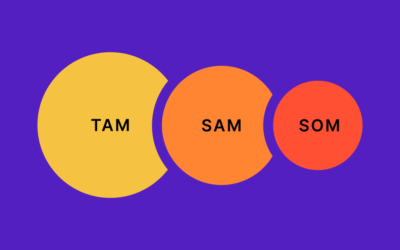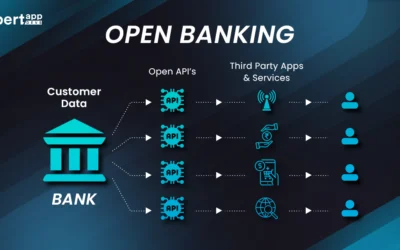在现代金融市场中,机构投资者普遍采用多种量化投资策略来增强回报、降低风险,并实现市场中的系统化、自动化交易。常见的量化投资策略包括:
- 动量策略(Momentum Strategy)
- 均值回归策略(Mean Reversion Strategy)
- 趋势跟随策略(Trend Following Strategy)
- 统计套利策略(Statistical Arbitrage)
- 机器学习策略(Machine Learning Models)
- 市场中性策略(Market Neutral Strategy)
- 高频交易策略(High-Frequency Trading, HFT)
下面,我将为每种策略提供一个对应的 Pine Script 代码实现。请注意,Pine Script 的能力较为有限,通常只适合用于短期策略的回测和实际交易。因此,复杂的策略,如机器学习和高频交易等,可能需要在其他平台上实现。
1. 动量策略(Momentum Strategy)
动量策略基于价格动量,即过去表现良好的资产将在未来继续表现良好。常用的动量指标包括相对强弱指数(RSI)和移动平均收敛/发散指标(MACD)。
//@version=5 indicator("Momentum Strategy", overlay=true) // 参数设置 length = input(14, title="RSI Length") rsi_value = ta.rsi(close, length) // 买入信号:RSI突破50 buySignal = rsi_value > 50 sellSignal = rsi_value < 50 // 绘制买卖信号 plotshape(buySignal, color=color.green, style=shape.labelup, location=location.belowbar, text="BUY") plotshape(sellSignal, color=color.red, style=shape.labeldown, location=location.abovebar, text="SELL") // 执行策略 if (buySignal) strategy.entry("Buy", strategy.long) if (sellSignal) strategy.close("Buy")2. 均值回归策略(Mean Reversion Strategy)
均值回归策略假设价格会回归到其历史均值。常用的均值回归工具包括布林带(Bollinger Bands)和移动平均线。
//@version=5 strategy("Mean Reversion Strategy", overlay=true) // 布林带参数 length = input(20, title="Bollinger Bands Length") src = close mult = input(2.0, title="Multiplier") basis = ta.sma(src, length) dev = mult * ta.stdev(src, length) upper = basis + dev lower = basis - dev // 买卖信号 longCondition = close < lower shortCondition = close > upper // 绘制布林带 plot(upper, color=color.red, title="Upper Band") plot(lower, color=color.green, title="Lower Band") // 绘制买卖信号 plotshape(longCondition, color=color.green, style=shape.labelup, location=location.belowbar, text="BUY") plotshape(shortCondition, color=color.red, style=shape.labeldown, location=location.abovebar, text="SELL") // 执行策略 if (longCondition) strategy.entry("Long", strategy.long) if (shortCondition) strategy.entry("Short", strategy.short)3. 趋势跟随策略(Trend Following Strategy)
趋势跟随策略基于资产价格的趋势运动,当价格呈现一定的趋势时,策略会跟随这个趋势。常见的工具包括移动平均线和ADX(平均方向指数)。
//@version=5 strategy("Trend Following Strategy", overlay=true) // 参数设置 length = input(14, title="ADX Length") threshold = input(25, title="ADX Threshold") // 计算True Range (TR) highLow = high - low highClose = math.abs(high - close[1]) lowClose = math.abs(low - close[1]) TR = math.max(highLow, math.max(highClose, lowClose)) // 计算+DI和-DI var float plusDM = na var float minusDM = na var float smoothedTR = na var float smoothedPlusDM = na var float smoothedMinusDM = na // 计算当前周期的+DM和-DM plusDM := (high - high[1] > low[1] - low) and (high - high[1] > 0) ? high - high[1] : 0 minusDM := (low[1] - low > high - high[1]) and (low[1] - low > 0) ? low[1] - low : 0 // 计算True Range的平滑值 smoothedTR := ta.sma(TR, length) // 计算+DM和-DM的平滑值 smoothedPlusDM := ta.sma(plusDM, length) smoothedMinusDM := ta.sma(minusDM, length) // 计算+DI和-DI plusDI = 100 * smoothedPlusDM / smoothedTR minusDI = 100 * smoothedMinusDM / smoothedTR // 计算ADX dx = 100 * math.abs(plusDI - minusDI) / (plusDI + minusDI) adx = ta.sma(dx, length) // 识别趋势:只有ADX超过阈值才认为存在强趋势 bullTrend = adx > threshold and plusDI > minusDI bearTrend = adx > threshold and minusDI > plusDI // 买卖信号 longCondition = bullTrend shortCondition = bearTrend // 绘制买卖信号 plotshape(longCondition, color=color.green, style=shape.labelup, location=location.belowbar, text="BUY") plotshape(shortCondition, color=color.red, style=shape.labeldown, location=location.abovebar, text="SELL") // 执行策略 if (longCondition) strategy.entry("Long", strategy.long) if (shortCondition) strategy.entry("Short", strategy.short)4. 统计套利策略(Statistical Arbitrage)
统计套利策略通常是基于两个相关资产价格的统计关系,比如配对交易(Pair Trading),这通常需要使用协整分析。由于 Pine Script 不能直接进行协整检验,我们可以使用两个资产之间的价格差异来执行配对交易策略。
//@version=5 strategy("Statistical Arbitrage Strategy", overlay=true) // 参数设置 length = input(20, title="SMA Length") symbol1 = input("SPY", title="First Symbol") symbol2 = input("QQQ", title="Second Symbol") // 获取两个符号的价格 price1 = request.security(symbol1, "1D", close) price2 = request.security(symbol2, "1D", close) // 计算价格差 spread = price1 - price2 smaSpread = ta.sma(spread, length) // 买卖信号:当价格差大于均值时做空,当小于均值时做多 longCondition = spread < smaSpread shortCondition = spread > smaSpread // 绘制买卖信号 plotshape(longCondition, color=color.green, style=shape.labelup, location=location.belowbar, text="BUY") plotshape(shortCondition, color=color.red, style=shape.labeldown, location=location.abovebar, text="SELL") // 执行策略 if (longCondition) strategy.entry("Long", strategy.long) // 做多 if (shortCondition) strategy.entry("Short", strategy.short) // 做空5. 机器学习策略(Machine Learning Models)
尽管 Pine Script 不支持机器学习模型(如决策树、支持向量机等),但可以在其他平台(如 Python 或 R)上使用机器学习训练策略,并将信号导入 Pine Script 中。通常这些模型会根据市场数据的历史模式生成买卖信号。
6. 市场中性策略(Market Neutral Strategy)
市场中性策略通常通过做多与做空相关资产的组合来实现,目的是无论市场上涨或下跌,依然可以获利。一个常见的市场中性策略是通过对冲风险来降低市场波动的影响。
//@version=5 strategy("Market Neutral Strategy", overlay=true) // 参数设置 symbol1 = input("SPY", title="Long Symbol") symbol2 = input("QQQ", title="Short Symbol") // 获取两个符号的价格 price1 = request.security(symbol1, "1D", close) price2 = request.security(symbol2, "1D", close) // 做多SPY,做空QQQ longCondition = price1 > ta.sma(price1, 20) // SPY价格高于20日均线 shortCondition = price2 < ta.sma(price2, 20) // QQQ价格低于20日均线 // 绘制买卖信号 plotshape(longCondition, color=color.green, style=shape.labelup, location=location.belowbar, text="BUY SPY") plotshape(shortCondition, color=color.red, style=shape.labeldown, location=location.abovebar, text="SELL QQQ") // 执行策略 if (longCondition) strategy.entry("Long SPY", strategy.long, comment="Long SPY") // 做多SPY if (shortCondition) strategy.entry("Short QQQ", strategy.short, comment="Short QQQ") // 做空QQQ7. 高频交易策略(High-Frequency Trading, HFT)
高频交易策略通常依赖于算法的快速执行和市场微结构的分析。Pine Script 适用于较短周期的策略回测,但由于其执行速度的限制,通常不用于高频交易。
以上是机构使用的几种常见量化投资策略及其对应的 Pine Script 实现。每种策略的核心思想和实现方式不同,可以根据不同市场条件和投资目标选择合适的策略。在实际应用中,量化投资策略还需要结合风险管理、资金管理等方面的内容来优化回报与风险。











